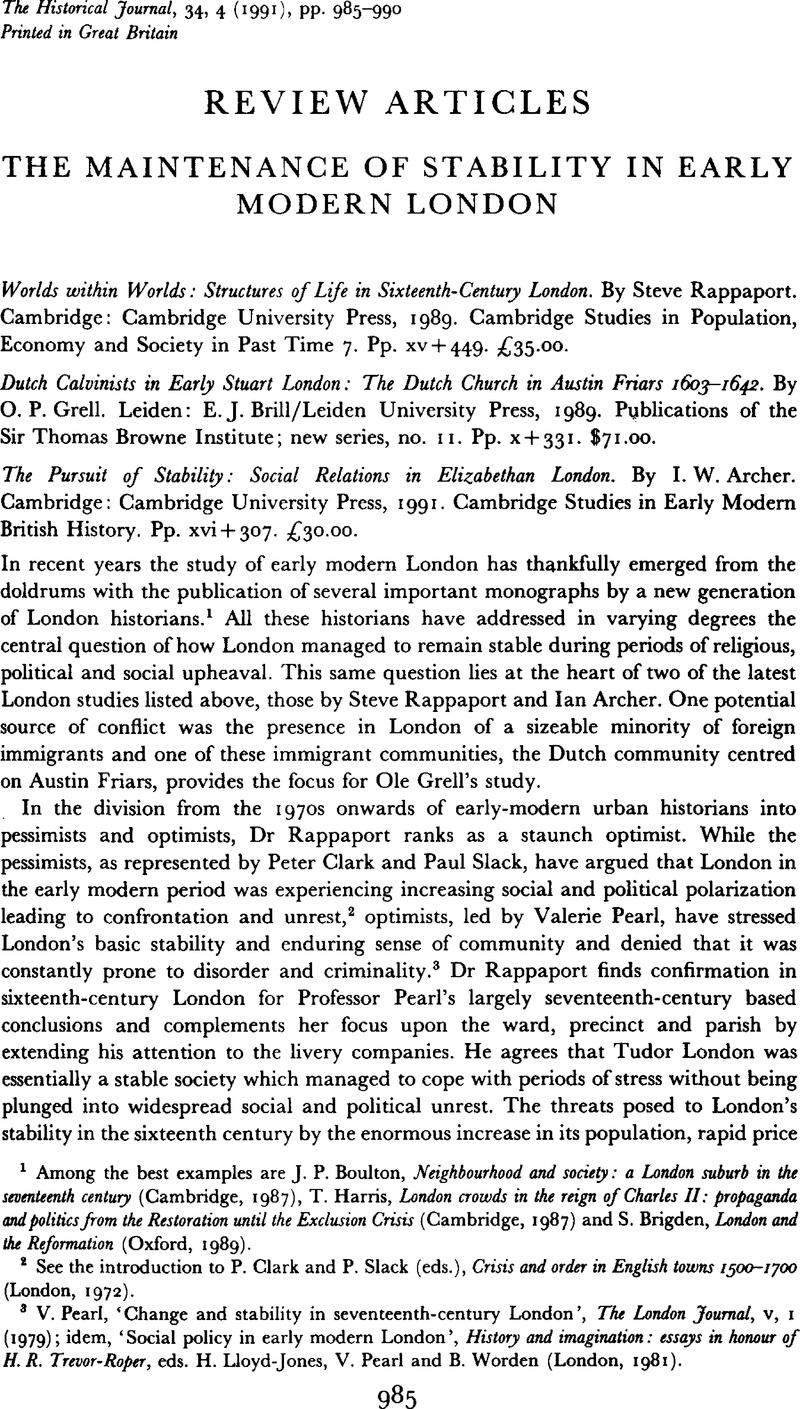No CrossRef data available.
Article contents
The Maintenance of Stability in Early Modern London
Published online by Cambridge University Press: 11 February 2009
Abstract

- Type
- Review Articles
- Information
- Copyright
- Copyright © Cambridge University Press 1991
References
1 Among the best examples are Boulton, J. P., Neighbourhood and society: a London suburb in the seventeenth century (Cambridge, 1987)CrossRefGoogle Scholar, Harris, T., London crowds in the reign of Charles II: propaganda and politics from the Restoration until the Exclusion Crisis (Cambridge, 1987)Google Scholar and Brigden, S., London and the Reformation (Oxford, 1989)Google Scholar.
2 See the introduction to Clark, P. and Slack, P. (eds.), Crisis and order in English towns 1500–1700 (London, 1972)Google Scholar.
3 Pearl, V., ‘Change and stability in seventeenth-century London’, The London Journal, V, I (1979)Google Scholar; idem, ‘Social policy in early modern London’, History and imagination: essays in honour of H.R. Trevor-Roper, eds. H. Lloyd-Jones, V. Pearl and B. Worden (London, 1981).
4 Boulton, , Neighbourhood and society, pp. 151–4Google Scholar.
5 For example, the Lansdowne manuscripts in the British Library and acts of the privy council and state papers domestic should have been consulted.
6 For some preliminary observations on this subject see Lindley, K., ‘London’, Town and countryside in the English Revolution, ed. Richardson, R. C. (Manchester, forthcoming)Google Scholar.
7 Woodhead, J. R., The rulers of London 1660–1689: a biographical record of the aldermen and common councilmen of the City of London, London and Middlesex Archaeological Society (1965)Google Scholar.


